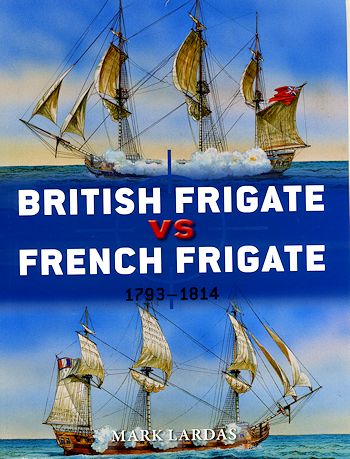 Many of us
have seen movies about the age of sail. These were the times of buccaneers and
the seemingly endless war between Britain and France. During this later period,
which ran from about 1793 until 1814, is pretty much the pinnacle of the age of
sail. After that, steam power came into prominence and with the invention of the
screw propeller, replacing cumbersome sidewheels and the first all metal ships,
sailing ships in terms of military vessels was on a rapid decline.
Many of us
have seen movies about the age of sail. These were the times of buccaneers and
the seemingly endless war between Britain and France. During this later period,
which ran from about 1793 until 1814, is pretty much the pinnacle of the age of
sail. After that, steam power came into prominence and with the invention of the
screw propeller, replacing cumbersome sidewheels and the first all metal ships,
sailing ships in terms of military vessels was on a rapid decline.
During the period mentioned above, the best ship to have from
a captain's standpoint was a frigate. These ships were very much like modern
cruisers in that they had the firepower to handle many other types of ship and
the speed to outmaneuver those they couldn't. Frigates were basically single gun
deck ships whose weaponry increased over the years, though not to the point that
they were overgunned.
Both the British and the French built frigates that were
pretty much equal to each other in terms of ship design and armament. The major
benefit that the British had during this time was access to timber for making
ships. This allowed them to make them sturdier, though it did make them heavier.
The French, however, were pretty well blocked from any timber source and so had
to build ships with lighter framework. This made them lighter and faster, but
also caused the ships to flex more and this could be a negative factor.
But the biggest area where the British had the benefit was in
their crews. The French Revolution pretty well decimated the aristocracy and it
was those people who were the officer material for their military. This meant
they lost most of their experienced captains. Their crews were also not as well
trained as the British. To the French, guns belonged to the army and so it was
army personnel who manned their guns. The British looked at guns as being part
of the ship so these were manned by ship's crews who were well trained in
gunnery at sea.
What this meant is that in most instances where French and
British Frigates met in battle, the British were the victors. In this book,
author Mark Lardas looks at the history of the development of the frigate from
both points of view. This includes the quality and training of the men who
sailed these ships. We are then provided with several combats between the two
nations as examples to what all that was previously covered did to the way a
battle played out. The book then ends with an assessment of what was covered.
This is all accompanied by period artwork as well as more modern illustrations,
making for another excellent title in this series and one that I can highly
recommend for an interesting read.
June 2013
For more on the complete line of Osprey books,
visit www.ospreypublishing.com. In the US, it is
Osprey Direct at 443 Park Avenue South, New York, NY 10016, where you can
get a catalogue of available books.
If you would like your product reviewed fairly and quickly, please contact
me or see other details in the Note to
Contributors.
 Many of us
have seen movies about the age of sail. These were the times of buccaneers and
the seemingly endless war between Britain and France. During this later period,
which ran from about 1793 until 1814, is pretty much the pinnacle of the age of
sail. After that, steam power came into prominence and with the invention of the
screw propeller, replacing cumbersome sidewheels and the first all metal ships,
sailing ships in terms of military vessels was on a rapid decline.
Many of us
have seen movies about the age of sail. These were the times of buccaneers and
the seemingly endless war between Britain and France. During this later period,
which ran from about 1793 until 1814, is pretty much the pinnacle of the age of
sail. After that, steam power came into prominence and with the invention of the
screw propeller, replacing cumbersome sidewheels and the first all metal ships,
sailing ships in terms of military vessels was on a rapid decline.